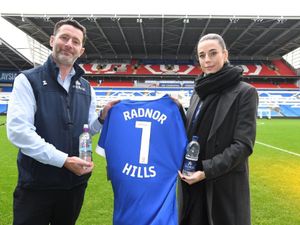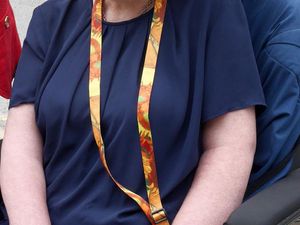BAE hoping to help tanks see in the dark
The British Army's tanks could be equipped with cutting-edge night-vision technology if a Shropshire-based consortium wins a £700 million contract to upgrade them.
BAE Systems, which has a base at Hadley Park in Telford, is leading a bid to update the Army's 227-strong Challenger 2 tank fleet. If successful, it could create dozens of new jobs in the town.
And BAE has revealed that the bid will use technology developed by UK-based Leonardo, which will for the first time give both the gunner and commander independent night vision.
Leonardo's technology has previously been used in David Attenborough’s Planet Earth II documentary series to capture the most detailed film ever seen of a leopard’s nocturnal hunt, right down to the movement of individual hairs on its body.
The technology is also used by international cricket umpires, with thermal imaging showing whether the ball has struck the bat or pads through the heat generated by friction.
Simon Jackson, campaign leader for Team Challenger 2 at BAE Systems' Telford base, said it would be a big step forward.
He added: "Leonardo’s sight brings to Team Challenger 2 the most capable night vision available."
He said it would mean data could be shared across crew stations as well as with battle management computers.
Mr Jackson added: “Sighting is a vital element of a battle tank’s role and Leonardo’s sight will provide our troops with unparalleled 24-hour night-and-day visibility, giving them a long-range threat identification system that really makes the most of the tank’s firepower.”
Mike Gilbert of Leonardo said the cameras could 'see' in total darkness as far as the horizon.
"The applications for this technology are endless," he said.
“Our infra-red technology plays a crucial role in supporting British troops in the most challenging environments and we’re pleased to be working alongside BAE Systems to offer this technology for Challenger 2, helping extend its life to 2035 and beyond.”
The technology is already used on other military platforms, including the Royal Navy’s Queen Elizabeth aircraft carrier and the RAF’s Chinook fleet.
It was previously used in Afghanistan to allow Chinook helicopters to fly undetected through mountain valleys, even in poor weather conditions.
It also brought the ability to detect, recognise and identify coalition troops or vehicles at a safe stand-off range prior to entry into drop or landing zones.
Challenger 2 is the British Army's main battle tank, and was designed and built by BAE in the 1990s.
The company is now bidding to keep it battle-ready for the next two decades as part of the Challenger 2 Life Extension Project.
It is understood that the decision on who to award the contract to will be made during the middle of next year.





